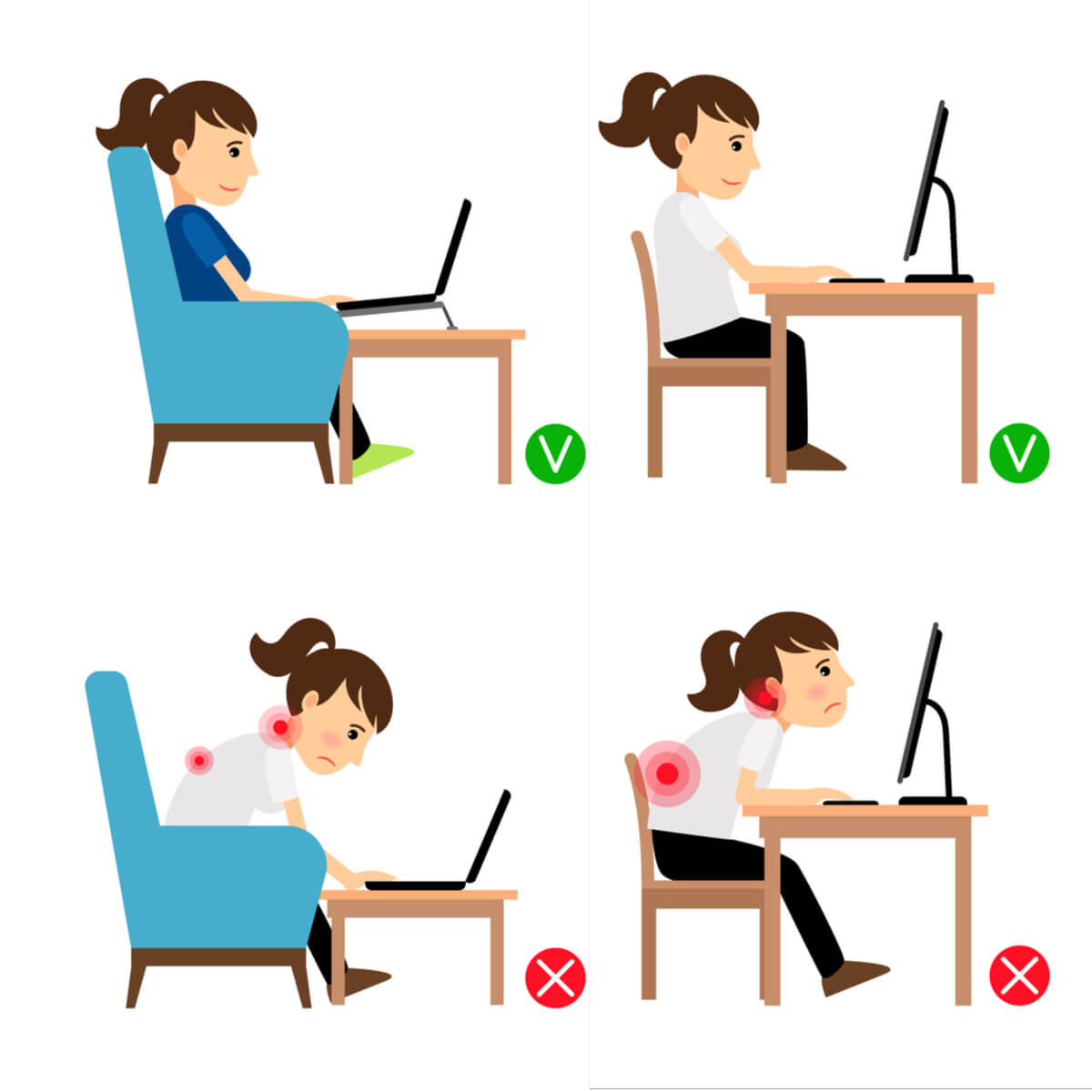Neck pain is common, especially amongst those of us who work at desks. Whether it’s a random short-term acute pain, or an ongoing ache, it seems to be a ubiquitous complaint. But why exactly do we get neck pain when we think we’ve done little to cause it? Here we run through the top 5 causes for neck pain. One of these is likely to be the culprit in your case.
There’s a huge correlation between the type of clientele we treat at PhysioMotion for neck pain and the number of hours spent on a computer or mobile device. Long hours hunched over a laptop or staring down at a smartphone causes tremendous strain to the long muscles that support our head – and our heads weigh a lot!
Often we maintain a slightly forward or bent position while working on laptops. This can cause tightness in the neck muscles that are having to work doubly hard to support your head. There are some common ways to immediately reduced this pain:
No chair is perfect, but they have backrests for a reason. Relax into your chair. Allow your shoulders to drop from your ears by supporting your forearms on your desk. Feel comfortable while sitting, not as if you’re lurching forward over your desk.
Overstretching for your mouse and keyboard, or to read small text on your screen can feed into that pain in your neck. A more relaxed arm position will reduce the strain on your neck.
Lots of individuals adopt a “poking chin” posture where the muscles in their neck are overstretched. By pulling your chin back you’re using muscles deep in your neck. By strengthening these muscles with deep neck flexion exercises, you can reduce neck pain and let the overworked muscles relax.

Our bodies were made to move. Maintaining a single posture for 8 hours a day, which most desk-based work requires, is not healthy for our muscles or our joints. Movement is how joints lubricate themselves and get the essential nutrients to maintain their health.
By keeping your neck, arms and chest in the same position while working at a desk, you stiffen up and your muscles waste. It then becomes harder to maintain your head position, and subsequently increases the force on these sensitised neck structures.
An easy solution to this: do more activity! Head to the gym after work, begin running or cycling to work, go for a walk in your lunch break, stand up and stretch every 45 minutes. Keep your neck mobile!
Stress and anxiety wind up the “fight or flight” mechanisms in the body, resulting in a release of a hormone called cortisol. This hormone puts our physiological radar into overdrive, being aware of any pain stimulus and greatly amplifying those signals. This means that in a stressful situation you can have an exaggerated pain response even to something non-threatening.
Could your neck pain be related to an upcoming deadline, increased pressure at work or lengthened working days? Your neck pain may actually be your body providing a physical output for this increased mental stress. We increase the tension in our shoulders during these stressful times, and due to their close affinity to our neck, tight shoulders can cause localised neck pain and discomfort.
As we just mentioned earlier, the shoulder and back muscles have a close affinity with the neck, and can often be a source of referred pain. Often, our patients complain of tension headaches or migraine-like symptoms that are replicated by pressing a certain point on their back.
There can be knots and trigger-points throughout the spinal and shoulder muscles which radiate up into the neck. These can arise naturally, but can also indicate a source of weakness.
A strengthening and flexibility programme for back and shoulders has helped many of our patients improve their neck pain. We recommend trying a few of the following exercises:
Sleeping awkwardly, suffering whiplash or a blow to the neck can cause pain and trauma to the neck area. The surrounding structures, muscles and connective tissues in the neck are usually stressed from an impact or other injury, and can take different amounts of time to settle down depending on the type of tissue and the extent that it has been damaged. In these situations, get advice as to the best treatment.
At PhysioMotion, we always try to deal with the sources of neck pain rather than just the symptoms. If you’d like your posture assessed, need help formulating an exercise plan, or need to release muscle tension, get in touch.
Disclaimer: If you have ongoing neck pain for 6 weeks or more with symptoms such as persistent dizziness, double vision, facial numbness, associated nausea, difficulty swallowing/speaking, or fainting, you should have yourself assessed by a healthcare practitioner.